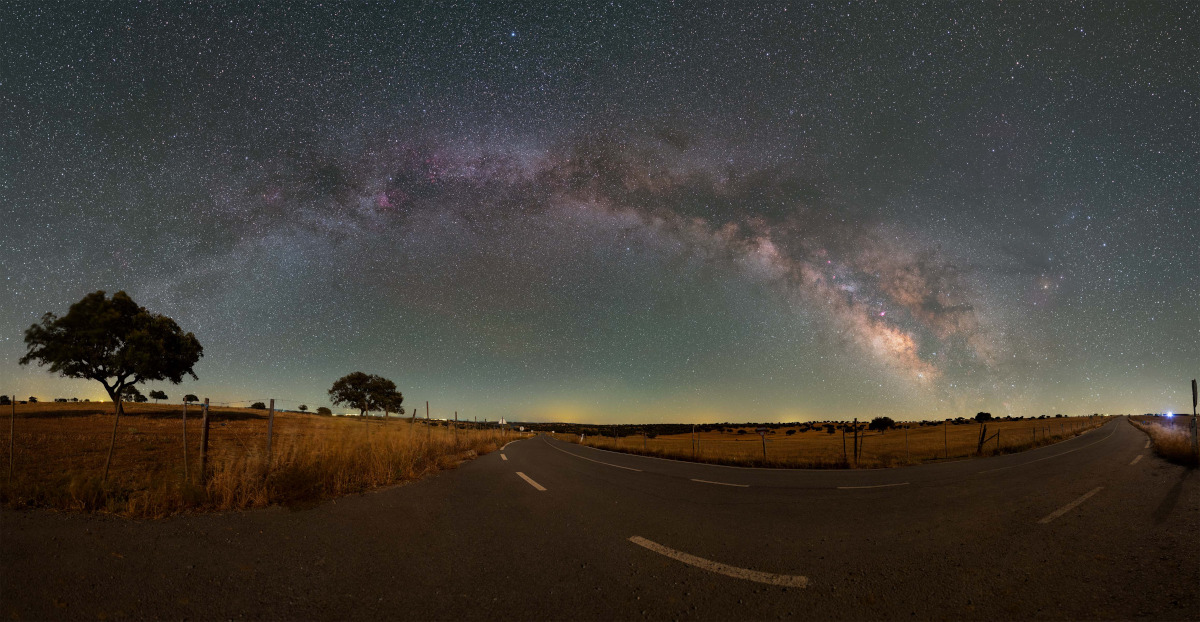2022年6月11日
The Road and the Milky Way
Image Credit & Copyright: David Cruz
Explanation: At night you can follow this road as it passes through the Dark Sky Alqueva reserve not too far from Alentejo, Portugal. Or you could stop, look up, and follow the Milky Way through the sky. Both stretch from horizon to horizon in this 180 degree panorama recorded on June 3. Our galaxy’s name, the Milky Way, does refer to its appearance as a milky path in the sky. The word galaxy itself derives from the Greek for milk. From our fair planet the arc of the Milky Way is most easily visible on moonless nights from dark sky areas, though not quite so bright or colorful as in this image. The glowing celestial band is due to the collective light of myriad stars along the galactic plane too faint to be distinguished individually. The diffuse starlight is cut by dark swaths of the galaxy’s obscuring interstellar dust clouds. Standing above the Milky Way arc near the top of this panoramic nightscape is bright star Vega, with the galaxy’s central bulge near the horizon at the right.
Tomorrow’s picture: pareidolia in space
道路与银河
影像提供与版权: David Cruz
说明: 在晚间,你可以沿着这条道路穿过离葡萄牙.阿连帖究不远的阿尔克瓦暗空保护区。或者你可以停下来,抬头仰望穿过天空的银河。在摄于6月3日的这幅180度全景图里,两者都从一侧的地平线延伸到另一侧的地平线。我们所在的星系称为银河系,其义为天空的一道乳白的光带。而星系一词源自希腊语的牛奶。在美丽的地球上的无月光干扰夜晚,从无光害的地点看出去,可轻易见到悬在天空的银河光弧,只不过没这张影像里的那么明亮或色彩缤纷。这道光带,是由于银河盘面上、难以数计过于昏暗而无法分辨的恒星之集体星光所聚成。此外,弥漫的光带也受到银河系里不透光的星际尘埃云之切割。在银河弧上方的这幅全景影像顶部附近,可见到明亮的织女星,银河系的中央鼓核则在右侧的地平线附近。
明日的图片: pareidolia in space



